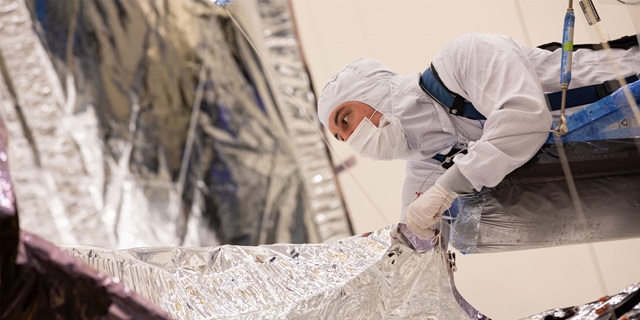JAMES WEBB SPACE TELESCOPE
How Northrop Grumman Prepared the Webb Sunshield to Unfold Flawlessly in Space
By Brooks McKinney, APR

How do people on the ground unfold a five-layer sunshield the size of a tennis court orbiting in space? With practice. A lot of practice.
A little over a week after NASA’s James Webb Space Telescope (Webb) launched, a team of NASA, Northrop Grumman and other mission partner engineers completed the deployment and tensioning of the telescope’s sunshield from the Mission Operations Center in Baltimore, Maryland. Made of layers of chemical polyimide film, the structure shields Webb's infrared telescope and science instruments from heat and light generated by the Sun, Earth, or even the observatory itself that could make the telescope too hot to work properly. And the shield has a big job, since the temperature of Webb must not rise above -380 degrees Fahrenheit.
There was only one chance to get it right, so for years, engineers prepared using an intricate model of the sunshield developed at Northrop Grumman’s Space Park facility in California.
"I was quite relieved, but not surprised, when we successfully completed the sunshield deployment," says Jeff Cheezum, the engineer who led Northrop Grumman's design and development of the sunshield. "After testing every possible aspect we could think of, there was just no way it was going to fail."
